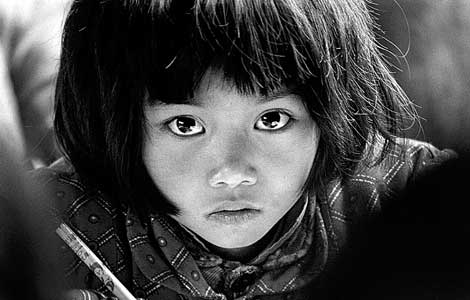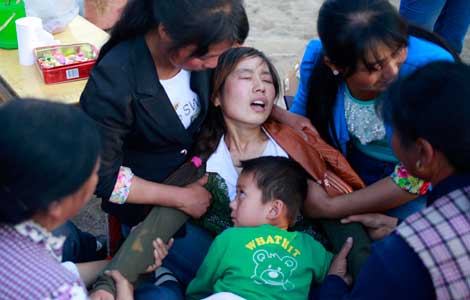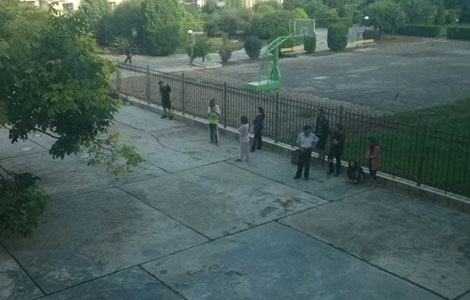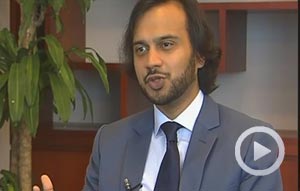Jobless rate to be 'last straw' for policy direction
Updated: 2013-07-23 07:19
By Chen Jia (China Daily)
|
||||||||
Analysts believe that a sharp deterioration in the employment situation could be the 'last straw' that forces changes in economic policy, although it's not yet clear what the government's bottom line for growth is this year.
Whether GDP grows 7 percent or 7.5 percent is still a subject of hot dispute. One is the point at which the jobless rate may surge out of control. The other is the government's full-year target.
The second quarter's weaker-than-expected GDP figure of 7.5 percent, the lowest level in a year, was a sign of slowing momentum that could narrow the safety margins of the world's second-economy against shocks.
Although headwinds may increase in the second half because external and domestic demand is likely to remain sluggish, the government led by Premier Li Keqiang is determined to promote a growth pattern shift from investment-driven to one more consumption-oriented.
The government aims to strengthen the contribution of the services sector and keep unemployment low.
To ensure stable employment seems much more important at the moment than locking a specific bottom line of growth, said Wang Jun, deputy director-general of the consulting research department of China Center for International Economic Exchanges, a Beijing-based government think tank.
Wang noted that when GDP growth falls below 7 percent, the small and medium-sized enterprises that generate most jobs in China are at an increased risk of bankruptcy. Factory workers, especially rural migrants, will lose jobs in the first wave.
During the global downturn, the government began a 4 trillion yuan ($651 billion) stimulus package after GDP growth slumped to 6.6 percent in the fourth quarter of 2008 from 9.8 percent in the third. During the downturn, many SMEs in coastal areas shut down and fired their workers.
Zhu Baoliang, an economist at the State Information Center, a think tank under the National Development and Reform Commission, said that the "safe zone" for unemployment is 4 to 5 percent.
"As long as we stay within the range, there will be no need to stress the 'floor'," said Zhu.
Jing Ulrich, managing director and chairwoman of global markets for China at JP Morgan, said that the new leadership has a greater tolerance for slower growth, compared with years earlier.
She said that the government may be willing to tolerate a minimum growth rate of 7 percent.
Another influence on policy will be the inflation rate, which economists believe could be less than 3 percent this year. The government's target is 3.5 percent.
Ma Jiantang, director of the National Bureau of Statistics, told Xinhua Net in an interview that both downside pressure and rebound momentum will "coexist" in the second half.
"As the reform motivation and potential will be further stimulated, the whole economy will maintain stable growth and finally achieve the targets with efforts," Ma said.
Economists believe that more detailed reform measures will be released in the third quarter, especially in the financial and service sectors.
On Friday, the People's Bank of China, the central bank, scrapped the floor on bank lending rates, which was seen as a big step toward a free interest rate system.
The State Council, China's cabinet, is encouraging more private capital to participate in the financial system and open banks at the county and village levels.
Barclays Capital economists Chang Jian and Joey Chew said the service sector will be the new growth engine for China. "Services development is the supply side of the Chinese rebalancing equation and goes hand-in-hand with strengthening private consumption," they said.
Most Viewed
Editor's Picks

|

|

|
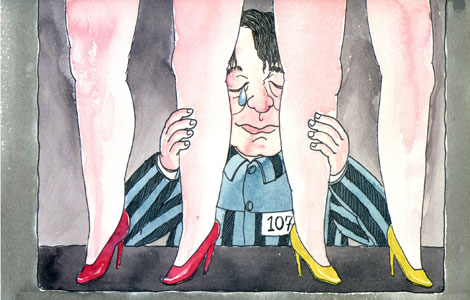
|

|

|
Today's Top News
Quake in NW China kills 89, injures 700
US blacks, whites split on Zimmerman verdict: poll
Kissinger and Jiang see bright future for relations
China sees no major forex withdrawal: regulator
Business holds up for Minmetals arm
Beijing knife attack leaves one dead
Kate gives birth to a baby boy
ROK-DPRK industrial park talks end
US Weekly

|

|


